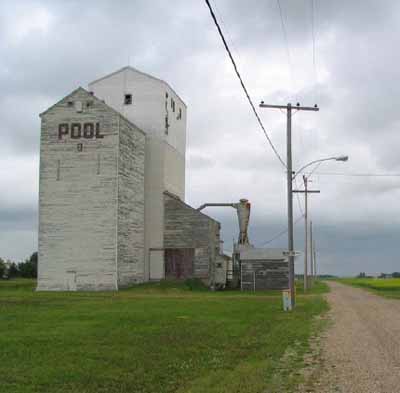Doukhobors at Veregin National Historic Site of Canada
Veregin, Saskatchewan

General view
© Parks Canada Agency / Agence Parcs Canada, Judith Dufresne, 2004.
Address :
1 Ave S, Veregin, Saskatchewan
Recognition Statute:
Historic Sites and Monuments Act (R.S.C., 1985, c. H-4)
Designation Date:
2006-11-27
Dates:
-
1904 to 1931
(Construction)
-
1931 to 1980
(Significant)
-
1980 to 2009
(Significant)
Event, Person, Organization:
-
Peter V. Verigin
(Person)
-
A.A. Horkoff
(Person)
-
Christian Community of Universal Brotherhood
(Organization)
Other Name(s):
-
Doukhobors at Veregin
(Designation Name)
-
National Doukhobor Heritage Village
(Other Name)
Research Report Number:
2003-061, 2005-007 SUP, 2008-052
Plaque(s)
Existing plaque: 1 Ave S, Veregin, Saskatchewan
Established in 1904 by followers of the communal ideals of Peter V. Verigin, this settlement served as the administrative, distribution, and spiritual centre for Canada's Doukhobor communities. The original Prayer Home, machine shed, grain elevator, and foundations of the old store remain to bear witness to this community's first period of settlement, as well as to their collective toil and utopian ideals. The striking design and scale of the Prayer Home reflect the authority and vision of Peter Verigin as well as the spiritual and cultural significance of this place for Doukhobors.
Description of Historic Place
Located in rural Saskatchewan, the Doukhobors at Veregin National Historic Site of Canada was a centre for the larger Doukhobour communities in the general area. The site itself is a level plot surrounded by roads, the central feature of which is a large and very handsomely designed prayer home. Buildings original to the site, and others moved to the site combine to provide an understanding of the history of the Doukhobor people in Canada. The official recognition refers to the property, and its associated buildings and archaeological remains in their existing spatial relationships.
Heritage Value
The Doukhobors at Veregin was designated a national historic site of Canada in 2006 because: the original Veregin settlement (of which the prayer home, machine shed, grain elevator and foundations of the old store survive) was the administrative, distribution and spiritual centre for the region during the first period of Doukhobor settlement in Canada; and, the spectacular prayer home reflects the settlement's importance to the Doukhobors as a religious and cultural centre, as well as the authority and the vision of the leader of the Doukhobors, Peter V. Verigin.
The Doukhobors originated in southern Russia as a breakaway sect from the Russian Orthodox Church. After several moves within Russia, the Doukhobors began immigrating to Canada in the early 20th century. Inspired by their leader, Peter V. Verigin, the Doukhobors created the Veregin Settlement. This settlement played an essential role as an administrative, distribution, and spiritual centre for the Doukhobor community in the region. The settlement was established in 1904, and was the headquarters of the Christian Community of Universal Brotherhood between 1917 and 1931. The community declined after this point, but the settlement was revived in the 1980s as a heritage village dedicated to presenting the history of the Doukhobors. The spectacular two-storey prayer home, which originally served as the residence of the head of the community as well as the spiritual and administrative centre for Doukhobors arriving in Canada, currently operates as a museum and continues to play an important role within the Doukhobor community. (added to reflect second HV bullet)
Source: Historic Sites and Monuments Board of Canada, Minutes, 2005.
Character-Defining Elements
Key elements contributing to the heritage value of this site include: the location and interrelation of the original surviving buildings of the site, namely the drive shed (1910-12), grain elevator (ca. 1908), prayer home (1917), and the foundations of the old store (1904-08); the flat site with central open area, and unimpeded views within it; the presence of the relocated buildings; the volumes of the original and relocated buildings, their materials, roof types, window and door openings, trim, and internal disposition of spaces; the surface and below-grade archaeological remains, indicative of the locations of former buildings; the collections of objects related to Doukhobor history.